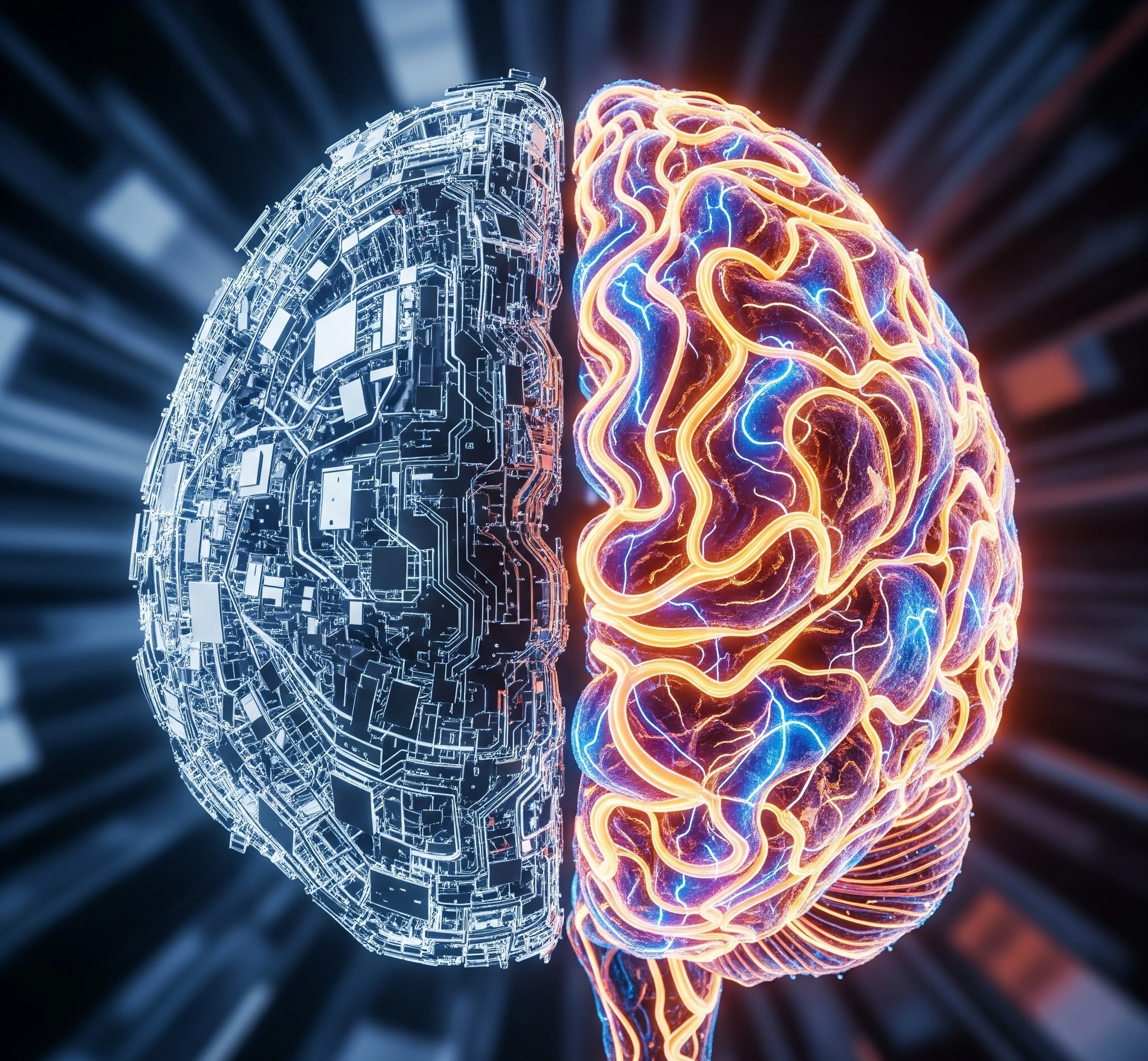DISSECTING THE CORE ARCHITECTURE


In the relentless march of technological progress, Artificial Intelligence (AI) stands as a monumental force. It promises to reshape not just industries, but the very fabric of our daily work lives. By 2025, AI tools will mature significantly. They will move beyond experimental phases to become integral components of how we operate. Yet, amidst the buzz and billion-dollar investments, a critical question often remains unanswered: are these advancements truly translating into tangible, impactful changes in our workflows? Why do so many AI initiatives stall, failing to deliver on their ambitious promises and leaving organizations with sophisticated dashboards and little real-world impact?
This article dives deep into the top 10 AI tools poised to revolutionize how we work in 2025. More than just a list of names and features, we aim to provide a unique perspective. This perspective is grounded in practical experience. We’ll show how these tools solve real problems, enhance productivity, and drive strategic advantages. We’ll explore the “why” behind their potential, offering a strategic framework for adoption that goes beyond surface-level understanding.
—
Think about your current workflow. How much time do you spend on repetitive tasks that drain your energy and distract you from strategic thinking? How often do valuable insights get lost in the noise of data overload? These are universal pain points echoed across industries, from bustling startups in Depok to multinational corporations. We are drowning in data but often starved for actionable intelligence. The promise of AI is not just automation; it’s about augmenting human capabilities. It frees us to focus on creativity, innovation, and complex problem-solving. Indeed, the AI tools highlighted here are the vanguards of this transformation, designed to address these very challenges head-on.
—
The power of modern AI tools lies in their sophisticated underlying architectures. Understanding these core components is crucial for appreciating their capabilities and limitations.
At the heart of many transformative AI tools are:
- Natural Language Processing (NLP): This enables machines to understand, interpret, and generate human language. It powers features like intelligent chatbots, automated summarization, and sentiment analysis.
- Computer Vision: This allows AI to “see” and interpret images and videos. This technology underpins applications such as automated quality control, facial recognition for security, and analysis of visual data.
- Machine Learning (ML) Algorithms: This engine drives AI’s ability to learn from data without explicit programming. Different types of algorithms, including supervised, unsupervised, and reinforcement learning, are tailored for specific tasks like prediction, classification, and decision-making. (For a deeper dive into these, you can explore understanding supervised and unsupervised learning).
- Data Management and Integration: Robust systems for collecting, storing, and processing vast amounts of data are essential for training and deploying effective AI models. Integration with existing enterprise systems is key for seamless adoption.
Ultimately, the synergy between these components allows AI tools to perform complex tasks previously time-consuming or impossible for humans.
—
UNDERSTANDING THE IMPLEMENTATION ECOSYSTEM
While the technological architecture is crucial, the success of AI adoption truly hinges on understanding the broader implementation ecosystem. Despite the allure of cutting-edge technology, many organizations stumble. This often happens due to a lack of strategic planning and a failure to address the human element. According to a recent study by McKinsey, nearly 70% of AI initiatives fail to deliver their expected value. This isn’t typically due to the AI itself, but rather challenges in integrating it into existing workflows, a lack of skilled personnel, and resistance to change within the organization. Short-sighted deployments focusing on isolated tasks, instead of holistic transformation, often lead to fragmented systems and unrealized potential. Therefore, true impact requires a clear understanding of business objectives, a well-defined AI strategy, and a commitment to upskilling the workforce.
—
PROOF OF EXPERIENCE
Let’s consider a real-world scenario. Imagine a mid-sized e-commerce company based here in Depok. They struggled with a high volume of customer inquiries and a growing backlog in their support department. They decided to implement an AI-powered chatbot to handle frequently asked questions and automate initial troubleshooting steps. Initially, the chatbot deployed with a basic knowledge base. While it managed to deflect some simple queries, it often failed to understand more complex issues. This led to frustrated customers and an increased workload for human agents who had to pick up the pieces.
This initial failure doesn’t reflect AI’s inherent limitations. Instead, it demonstrates a lack of experience in implementing it effectively. The company rushed deployment without adequately training the AI on a comprehensive dataset of customer interactions. They also failed to integrate it seamlessly with their CRM system or provide human agents with the tools to seamlessly take over complex conversations. The dashboard showed a high volume of chatbot interactions, leading to a false sense of progress. The reality on the ground, however, was increased customer dissatisfaction.
—
ORIGINAL INSIGHT
The critical insight here is that the true power of AI tools in 2025 lies not just in their algorithms or features. It lies in their ability to learn and adapt within a well-defined ecosystem that includes human oversight and continuous improvement. The “code” to unlocking AI’s transformative potential isn’t just lines of programming; it’s a strategic approach prioritizing:
- Human-Centered Design: AI tools should be intuitive and augment human capabilities, not replace them entirely. Interfaces should be user-friendly, and workflows should facilitate seamless collaboration between humans and AI.
- Data-Driven Iteration: AI models need continuous training and refinement with high-quality, relevant data. Performance metrics should be closely monitored, and feedback loops should be in place to identify areas for improvement.
- Strategic Integration: AI initiatives must align with clear business objectives and integrate into existing systems and processes. This requires cross-functional collaboration between IT, business units, and leadership.
- Ethical Considerations: As AI becomes more integrated into our work lives, ethical considerations around data privacy, bias in algorithms, and the impact on the workforce must be proactively addressed.
By shifting the focus from simply deploying AI to strategically integrating it within a human-centric and data-driven framework, organizations can move beyond superficial dashboards and unlock real, transformative value.
—
ADAPTIVE ACTION FRAMEWORK
To effectively leverage the top 10 AI tools in 2025 and beyond, organizations need an **adaptive action framework**:
- Identify Strategic Pain Points: Don’t just adopt AI for the sake of it. Pinpoint specific workflow areas where AI can address significant challenges or create new opportunities.
- Start Small and Iterate: Begin with pilot projects in focused areas. This allows for experimentation and learning before large-scale deployments.
- Invest in Data Infrastructure: Ensure you have the systems and processes in place to collect, clean, and manage high-quality data. This is the fuel for effective AI.
- Foster Cross-Functional Collaboration: Break down silos between IT and business teams. This ensures AI initiatives align with business needs and integrate effectively.
- Prioritize User Training and Change Management: Equip your employees with the skills and understanding needed to work effectively with AI tools. Address concerns and foster a culture of adaptation.
- Continuously Monitor and Evaluate: Track the performance of your AI deployments against key business metrics and iterate based on the results.
- Embrace Ethical Considerations: Proactively address the ethical implications of your AI deployments, ensuring fairness, transparency, and accountability.


By adopting this adaptive framework, organizations can move beyond the hype and harness the true transformative power of AI tools in 2025.
—
FUTURE VISION & AUTHOR BIO
The future of work in 2025 will be defined by the intelligent integration of AI into our daily routines. The top 10 AI tools leading this charge will not only boast advanced technical capabilities but also prioritize user experience, seamless integration, and ethical considerations. Moving beyond isolated AI experiments, we are entering a phase where AI becomes a fundamental layer of our operational landscape. It will augment human intelligence and drive unprecedented levels of productivity and innovation. The key to success lies not just in adopting these tools, but in strategically embedding them within a holistic framework that values human ingenuity and continuous learning.
